Reviews
How Elizabeth Catlett Went From Exile to Artist for Our Times
The story behind “Elizabeth Catlett: A Black Revolutionary Artist and All That It Implies” at the Brooklyn Museum.
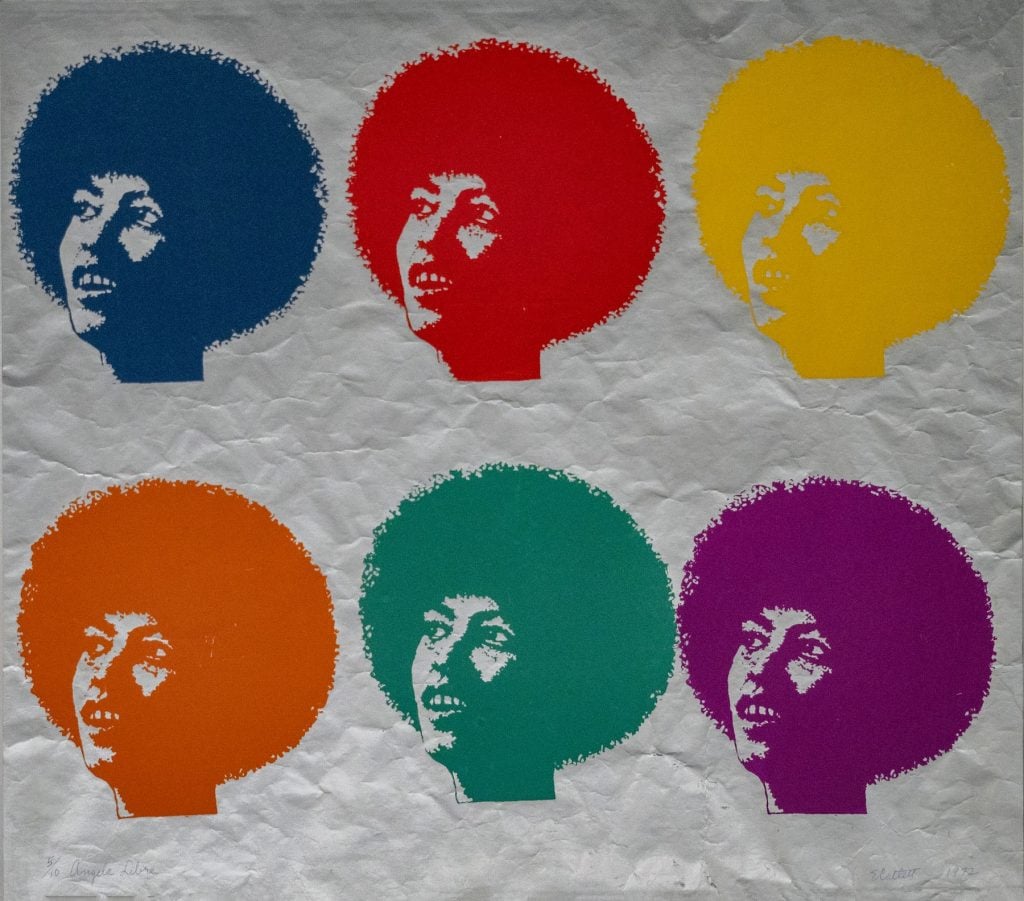
Elizabeth Catlett once told an interviewer that one of the biggest public misconceptions about her is that she’s a great artist.
She was “just lucky,” she said, to come “at a time when it’s fashionable or necessary to do something about a Black person and about a woman.”
Catlett made this comment in 2002, a few years after her 50-year retrospective at the Neuberger Museum of Art in Purchase, New York. Twenty-plus years later, the Brooklyn Museum has organized another. “Elizabeth Catlett: A Black Revolutionary Artist and All That It Implies” features a staggering amount of Catlett’s work, nearly 200 pieces ranging from the mid-1930s to the aughts. It demonstrates not only this artist’s remarkable versatility, but also how her lifelong devotion to issues much bigger than herself may have prevented her from quite seeing it.
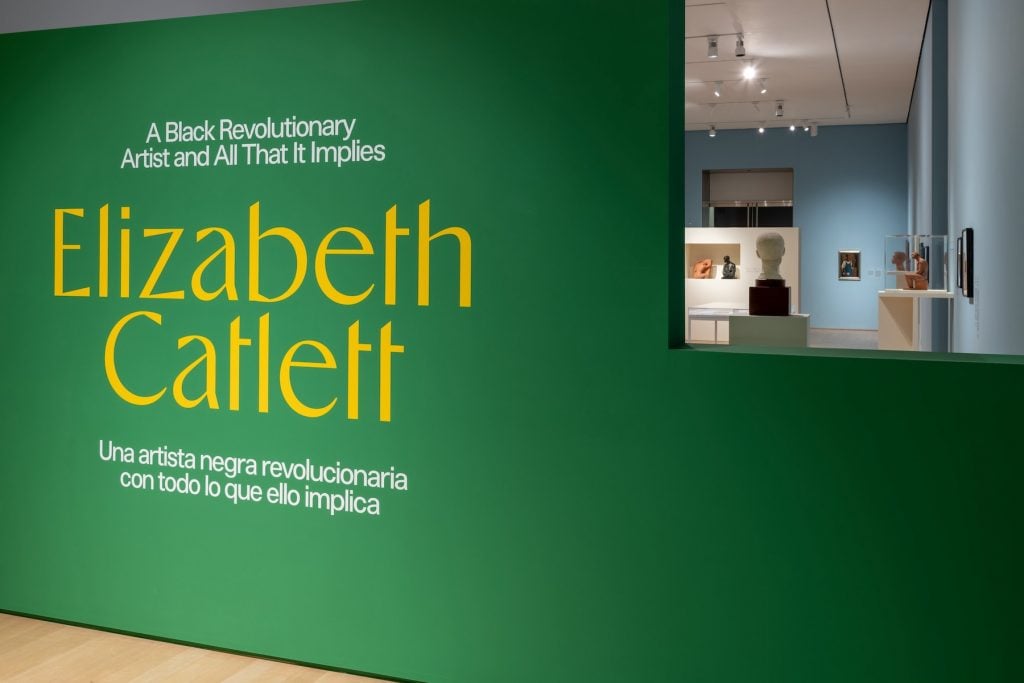
Installation view, “Elizabeth Catlett: A Black Revolutionary Artist and All That It Implies” at the Brooklyn Museum. (Photo: Paula Abreu Pita)
In 1945, Catlett detailed a “plan of work” for what would eventually produce one of her most celebrated series: “The Black Woman.” She made the group of fifteen linocuts while studying at the Taller de Gráfica Popular (TGP), a printmaking collective made up of leftist artist-organizers living in Mexico (the country where she would meet her soon-to-be husband, the artist Francisco Mora, and eventually take up permanent residence.) The recent gang rape of a Black mother by six white boys served as a catalyst for it. In fighting an “all-out war against tyranny and oppression,” she wrote, there was a “need for some knowledge of the role of Negro women in shaping the democratic process in this country.”
More on-the-nose examples of these women include her portraits in the show of Phyllis Wheatley, Harriet Tubman, and Sojourner Truth. The anonymous subjects in the series, though, like the image of one solemnly playing guitar beside a slightly obscured scene of a burning cross, are equally—if not more—effective in fleshing out “the picture of Negro women as participants in this fight,” as she described the series’s subject in her plan.
These nameless Black women prove how strength can emerge from deep suffering, and how a head-held-high dignity can live on in spite of it.
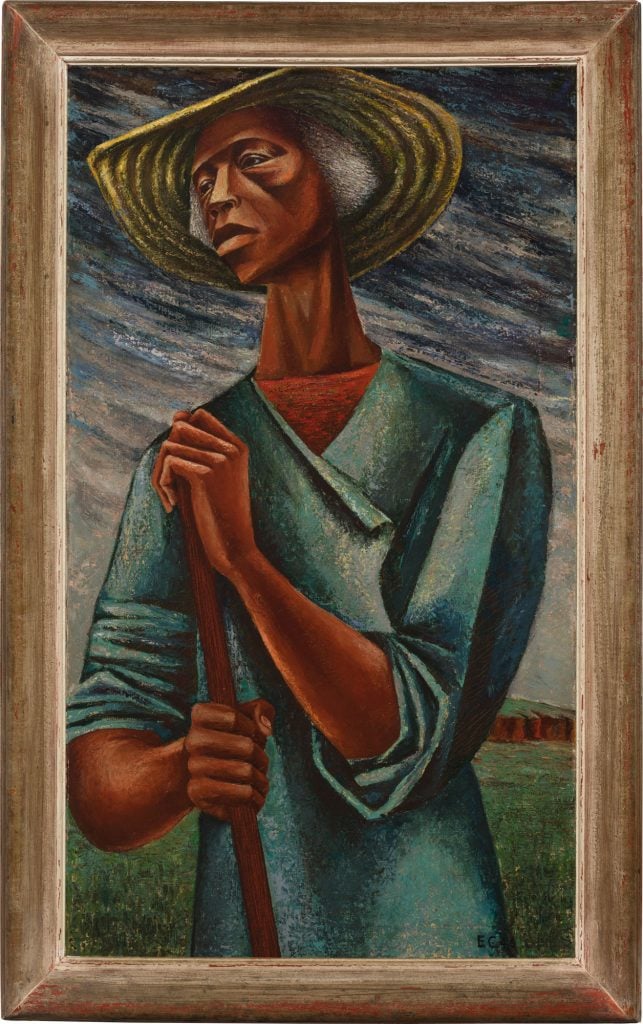
Elizabeth Catlett. Sharecropper (1946). Collection of John and Hortense Russell. © 2024 Mora-Catlett Family / Licensed by VAGA at Artists Rights Society (ARS), NY. (Photo: Wes Magyar)
Catherine Morris, curator for the Elizabeth A. Sackler Center for Feminist Art at the Brooklyn Museum, worked on the museum’s “We Wanted a Revolution: Black Radical Women, 1965–85” back in 2017, which included Catlett. She was keen on positioning the artist as an ideological outlier in this show.
The opportunity to then curate this large, monographic show with Dalila Scruggs, the Augusta Savage Curator of African American Art at the Smithsonian American Art Museum, seemed too perfect to ignore. Scruggs had already been examining the political underpinnings of Catlett’s work.
(Mary Lee Corlett, formerly of the National Gallery of Art, where the exhibition will travel next—followed by the Art Institute of Chicago—rounds out the senior curatorial team.)
Given the premise of the show, the curators decided to place “The Black Woman” series first, along with some early examples of Catlett’s paintings and sculptures. Examples of the latter include female busts with spare titles invoking how she viewed the emotional state of Black women at the time, like “Tired” and “Pensive.”
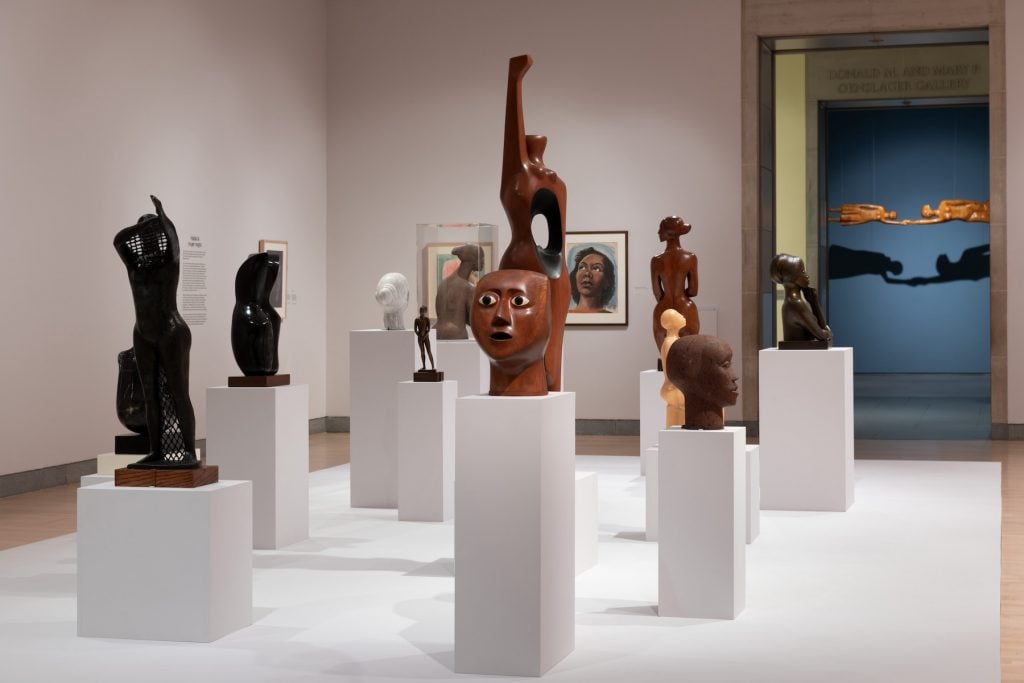
Installation view, “Elizabeth Catlett: A Black Revolutionary Artist and All That It Implies” at the Brooklyn Museum. (Photo: Paula Abreu Pita)
“We felt like this first moment was so important because it encapsulates both her arrival in Mexico and deep dive into conceptualizing framed by the TGP, and yet she’s bringing to that conversation a story of the experience of Black women in the United States,” Morris explained.
But before delving further into Catlett’s embrace of the politics espoused by Taller de Gráfica Popular, the curators take a much-needed step back. The next gallery examines her first real taste of an arts education, learning from artists such as James A. Porter, James Herring, and Loïs Mailou Jones at Howard University in Washington D.C., where she also grew up.
“The deeply political bent to Catlett’s work no doubt comes in part from her experiences in Washington, a segregated city at the time, with segregated schools, but also just from an incredible political and artistic community in D.C. and at Howard,” Samir Meghelli, chief curator at the Anacostia Community Museum, told me. His current exhibition on Black students and educators in Washington, D.C., in the 20th century covers this period of Catlett’s life.
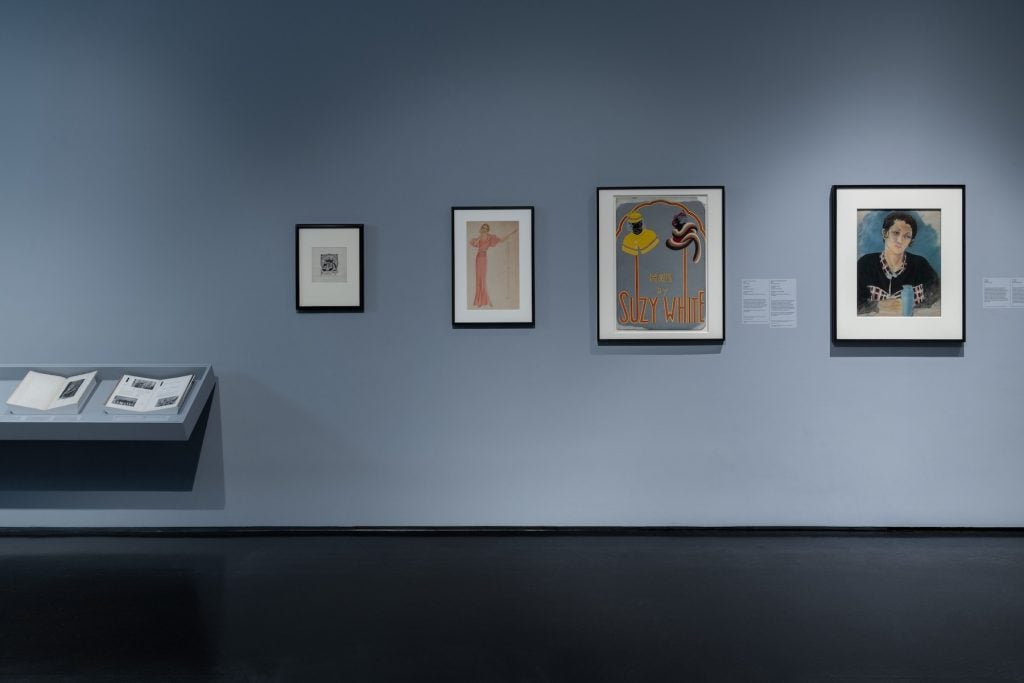
Installation view, “Elizabeth Catlett: A Black Revolutionary Artist and All That It Implies” at the Brooklyn Museum. (Photo: Paula Abreu Pita)
As a student at Howard in the ’30s, Catlett started gravitating toward social realism, once working on a mural for the Works Progress Administration. Despite ultimately getting fired, Catlett learned, partly through that commission, how she could use art as a tool to address social concerns. She continued to nurture this impulse while in graduate school in Iowa.
The thesis statement for her master’s project (included in the show) provides insight into what motivated Catlett to prioritize images of Black mothers with their children. “The implications of motherhood, and Negro motherhood, are quite important to me as I am a Negro as well as a woman,” she wrote.
Thematic threads like these provide the opportunity to consider how Catlett’s radical and often counter-cultural convictions carried over to her personal life. When she eventually became a mother (to three children with Mora), did she ever look inward to evaluate the role’s meaning for her—not letting it be defined, as it so often still is, by self-sacrifice?
After next working in art programs at historically Black universities in New Orleans and Virginia, respectively, Catlett landed in New York City in 1942, working for various pro-working-class groups, including a Communist-funded camp in New Jersey and a community school led by left-wing radicals in Harlem.

Installation view, “Elizabeth Catlett: A Black Revolutionary Artist and All That It Implies” at the Brooklyn Museum. (Photo: Paula Abreu Pita)
After earning the coveted Julius Rosenweld fellowship—one of the few fellowships open to Black applicants—she moved to Mexico to work with the TGP in 1946. By this point, she was, on account of her upbringing and experiences as a young adult, a very willing recipient of the type of organizing the group had to offer.
While in New York, “social realists, both Black and white, were already concerned with how to address their work to the working people,” explained Scruggs, “but what the TGP had to offer was a real model for how to actually be in touch with people in a much more grassroots way.”
Aesthetically, even her short-lived experiments in the abstract style favored by the era’s art world gave way to one more emblematic of the TGP, one that exudes more roundness and emotional warmth.
Catlett made these mostly mid-century prints—ranging from her widely popular image of a sharecropper to another of a Mexican laborer to yet another of a Mexican woman positioned in front of a plate of bread—while developing a language addressing societal ills like racism as only a Black woman living within a radically oriented community in Mexico could.
Catlett’s involvement in leftist organizing left her banned from entering the United States. Still, in the late ’60s, she used her art to stand in solidarity with activists of the Civil Rights and Black Power movements, even though she could only remain as a physical outsider looking in (later, after she was regranted entry to the States in 1971, she would participate as a toe-to-toe ally.)
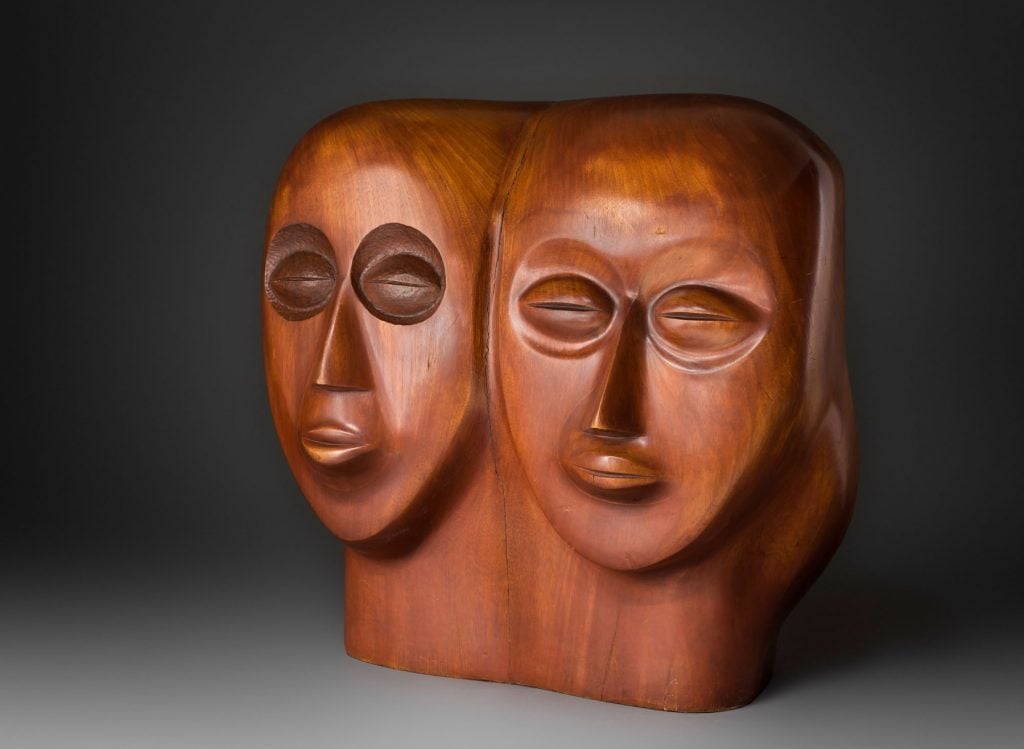
Elizabeth Catlett, Black Unity (1969). Cedar. Crystal Bridges Museum of American Art,Bentonville,Arkansas,2014. ©2024 Mora-Catlett Family/Licensed by VAGA at Artists Rights Society (ARS), NY.(Photo: Edward C. Robison III)
Her immediate and unflinching response to current events, including in pieces in honor of Angela Davis and the Black Panthers, aligns with the radically driven way she’d chosen to live her life. It also left her out of step with many creative peers of her generation—even as it connected with a younger cohort.
“In the midst of the Civil Rights and especially Black Power era, when a younger generation of artists coming up thought all work needed to be explicitly political in order to serve the revolution or the freedom struggle,” said Meghelli, “a lot of Elizabeth Catlett’s peers were not of that opinion.”
Catlett’s famous clenched fist sculpture features in the section of the show dedicated to this crossover, alongside works employing the then au courant visual language of radical protest—collage and screenprinting. The sculpture practice she had been cultivating as a vehicle to center Black women since her early days as an artist resurfaced with more vigor than ever in the 1990s, and is shown here right beyond it.
“I think what Elizabeth was able to capture, both in wood and bronze, is just the power and the dignity of her womanhood and Blackness,” said Ray McGuire, who credits gallerist June Kelly for rebuilding the artist’s reputation in the United States.
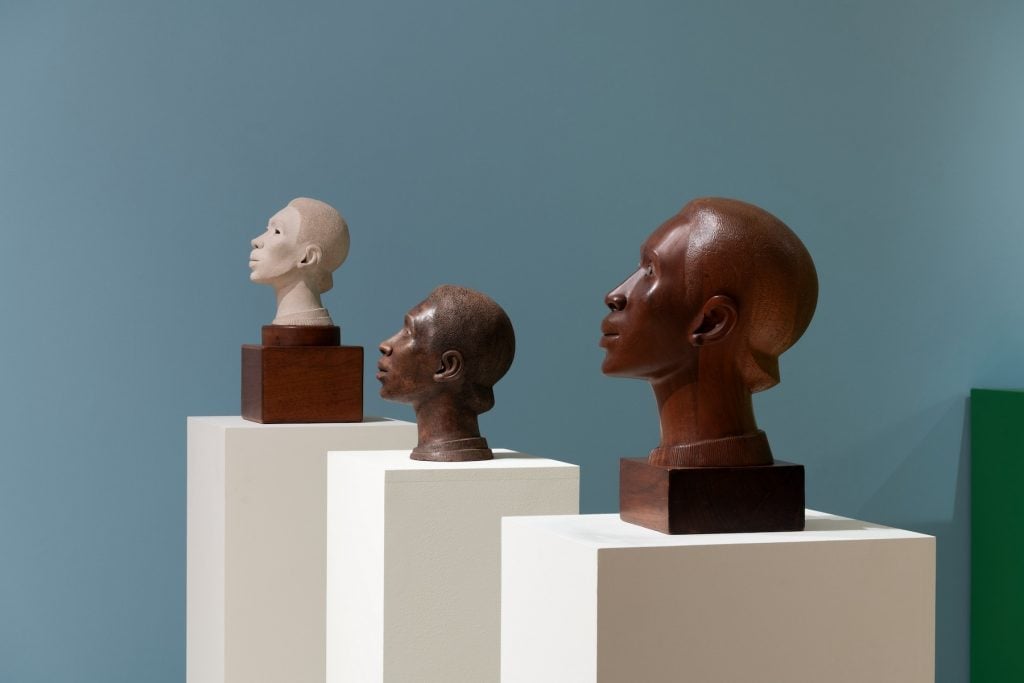
Installation view, “Elizabeth Catlett: A Black Revolutionary Artist and All That It Implies” at the Brooklyn Museum. (Photo: Paula Abreu Pita)
In the later decades of her life, as Catlett’s profile steadily grew, she started earning public art commissions. Examples of these close out the Brooklyn show—sculptures of celebrated Black figures, whose inner selves she aimed to capture in painstaking detail.
Artists can be motivated by many things. What seemed to drive Catlett throughout her career was her need to reach people—with art that mattered.
Catlett once recounted in an interview a story about when she and Mora (affectionately known as Pancho) attended an opening of a Jacob Lawrence show at the Brooklyn Museum. She said:
[The show] was full of Black people and full of Jake’s paintings, and Pancho said, ‘I have to tell Jake how I feel [about the work.]
So he went over and said: ‘You know, I never liked your work when I saw these reproductions. But I’m seeing it now in this room full of Black people and it looks like these people are looking at the people in your paintings and the people in your paintings are looking at these people.’
And I thought: ‘That’s what an artist wants.’”
I’d say that’s also what makes an artist great.
“Elizabeth Catlett: A Black Revolutionary Artist and All That It Implies” is on view at the Brooklyn Museum, through January 19, 2025





